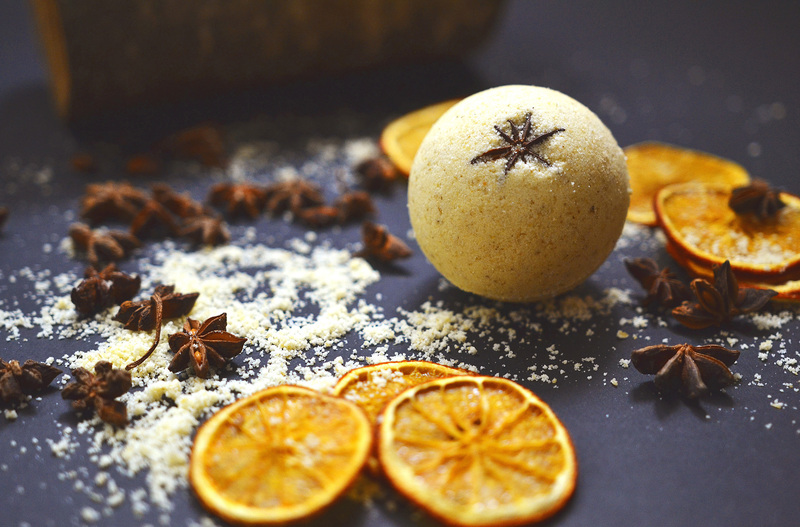Discover the Secret to a Spotless Stovetop Every Time
Posted on 22/05/2025
Discover the Secret to a Spotless Stovetop Every Time
Are you constantly battling stubborn stains, burnt-on spills, and greasy residue on your stovetop? Whether you're a passionate home cook or an occasional chef, keeping your stovetop pristine can seem impossible. But what if we told you that achieving a sparkling, clean stovetop every single time isn't just a dream--it's totally achievable with the right knowledge and techniques? In this article, we'll unlock the ultimate secrets for a spotless stovetop and reveal expert tips, tricks, and maintenance routines to make your kitchen shine like new.
Table of Contents
- Why a Spotless Stovetop Matters
- Understanding Your Stovetop Type
- Essential Tools and Products for a Gleaming Stovetop
- Step-by-Step Guide to Spotless Stovetop Cleaning
- Natural and Homemade Cleaning Solutions
- Avoiding Common Stovetop Cleaning Mistakes
- Long-Lasting Shine: Maintenance and Prevention Tips
- Frequently Asked Questions
- Conclusion
Why a Spotless Stovetop Matters
Keeping your stovetop spotless isn't just about aesthetics; it contributes significantly to kitchen hygiene, safety, and appliance longevity. Let's explore the compelling reasons:
- Hygiene: Bacteria and pests are attracted to food residue and grease. A clean stovetop keeps your kitchen healthy and safe.
- Safety: Accumulated grime and food particles can pose a fire hazard or obscure gas outlets and burners.
- Efficiency: Burners work better when free of debris, ensuring even heat distribution and energy savings.
- Longevity: Regular cleaning helps prevent wear, corrosion, and permanent stains, extending the lifespan of your stovetop.
- Aesthetic Appeal: Nothing beats the inviting gleam of a spotless stove, making your kitchen more enjoyable.
Understanding Your Stovetop Type
Before diving into the secrets to a gleaming stovetop, it's important to identify your stovetop type. Every style requires unique care:
- Gas Stovetops: Feature removable grates and burner covers--prone to food particles and greasy spills.
- Electric Coil Stovetops: Known for their exposed heating elements and drip pans, which can trap spills.
- Glass or Ceramic Stovetops: Sleek, flat surfaces prone to scratching, streaking, and burnt-on spills.
- Induction Stovetops: Flat and easy to wipe, but delicate and sensitive to harsh pads or chemicals.
Knowing your stovetop's material is essential for choosing the safest and most effective cleaning products and techniques.
Essential Tools and Products for a Gleaming Stovetop
To achieve a spotless stovetop every time, having the right tools on hand makes all the difference. Here's a list of essentials that will transform your cleaning routine:
- Microfiber Cloths: For gentle scrubbing and streak-free wiping.
- Soft Sponges and Non-Abrasive Pads: Perfect for loosening grime without scratching surfaces.
- Stovetop Scrapers: Particularly for glass or ceramic surfaces to chip off burnt-on residue.
- Baking Soda: Natural abrasive that safely cleans tough stains.
- White Vinegar: Cuts through grease and neutralizes odors.
- Dish Soap: Essential for removing everyday dirt and oil.
- Specialized Stovetop Cleaners: Formulated for glass, ceramic, or stainless steel surfaces.
- Toothbrush or Small Brush: Gets into hard-to-reach crevices and burner heads.
*Tip:* Keep your cleaning tools separate from regular dishwashing utensils for best results.
Step-by-Step Guide to Spotless Stovetop Cleaning
Unveiling the Secret Routine
The secret to a consistently clean stovetop lies in regular, thorough cleaning performed the right way. Here's a comprehensive step-by-step approach for all stovetop types:
1. Preparation: Safety First
- Make sure the stove is completely cool before starting.
- Disconnect the power supply for electric stoves or ensure gas is off for gas stovetops.
- Remove any cookware, utensils, and loose debris from the surface.
2. Disassemble Removable Parts
- Gas: Take off grates, burner caps, and knob covers.
- Electric: Remove coils and drip pans.
- Glass/Induction: No parts to remove, but dust or debris should be carefully cleared.
3. Soak and Scrub Components
- Soak grates, drip pans, and burner caps in hot, soapy water for 10-15 minutes.
- Use a soft sponge or brush to scrub away stuck-on residue.
- For stubborn stains, make a paste of baking soda and water, apply, and let sit before scrubbing.
4. Clean the Surface
Stick to methods that suit your stovetop material for maximum shine and minimal damage:
- Gas: Spray the surface with a degreaser or vinegar solution. Wipe clean, paying attention to burner areas.
- Electric: Wipe with damp cloth and dish soap, clean around heating elements. Clean drip pans separately.
- Glass/Ceramic: Sprinkle baking soda, spritz with vinegar, cover with a moist cloth for 10 minutes, then wipe and buff dry.
- Induction: Use only a damp cloth and gentle cleaner to avoid surface scratches.
5. Attack Tough Stains
- For burnt-on messes, use a stovetop scraper or razor at a shallow angle (especially on glass/cermic).
- Baking soda paste can help lift residues without scratching.
- Commercial stovetop cleaners work well but always follow the manufacturer's instructions.
6. Rinse and Polish
- Rinse removable parts thoroughly and dry.
- Buff stovetop surfaces with a clean microfiber cloth for a streak-free finish.
7. Reassemble and Inspect
- Reattach all grates, burner caps, and elements.
- Give the entire area one final wipe-down. Admire your spotless stovetop!
Natural and Homemade Cleaning Solutions
For those who prefer chemical-free and eco-friendly solutions, these safe homemade cleaners work wonders, ensuring a sparkling stovetop every time:
- Baking Soda and Vinegar: Sprinkle baking soda over stains, spritz lightly with vinegar. The fizzing reaction lifts grime and dissolves grease.
- Lemon Juice: Natural acid cuts through oily residue and leaves behind a fresh scent. Use lemon halves dipped in salt for gentle scrubbing.
- Castile Soap: An effective, plant-based soap ideal for everyday stovetop cleaning.
- Hydrogen Peroxide: Mixed with baking soda, creates a bubbly cleaner perfect for stubborn food stains (test on a small area first).
Pro Tip: Consistent, mild cleaning after each cooking session reduces the need for heavy-duty scrubbing.
Avoiding Common Stovetop Cleaning Mistakes
Even experienced cooks make mistakes that can lead to scratches, streaks, or damage. Watch out for these common errors to keep your stovetop looking flawless:
- Using Harsh or Abrasive Cleaners: These can permanently scratch glass, ceramic, or induction surfaces.
- Neglecting Regular Cleaning: Allowing spills to dry makes them much harder to remove and causes lasting stains.
- Applying Excess Water: Be careful not to get water into burner heads or electrical components.
- Skipping Pre-Cleaning Steps: Always let the stove cool and disconnect power when necessary.
- Forgetting the Knobs and Controls: These areas attract grime and should be wiped regularly with a damp cloth.
Remember: Gentle, frequent cleaning preserves shine and prevents build-up.
Long-Lasting Shine: Maintenance and Prevention Tips
Maintaining a spotless stovetop isn't just about cleaning up after a mess--the real secret to a sparkling stove is developing habits that prevent dirt and grime build-up in the first place! Here's how:
- Wipe Daily: After every use, wipe down your stove with a damp microfiber cloth to catch fresh spills.
- Deep Clean Weekly: Remove all removable parts and deep clean at least once a week.
- Use Splatter Guards: Cooking with oil? Use a splatter screen over pans to prevent greasy messes.
- Address Spills Immediately: Fresh spills are easier to remove and less likely to leave stains.
- Check Burner Heads and Ports: Use a small brush to keep burner ports clear and working efficiently.
- Protect Surfaces: For glass or ceramic stoves, invest in stovetop protectors to minimize scratches and keep the surface pristine.
A quick daily routine, combined with the occasional deep clean, is the ultimate secret to a dazzling, spotless stovetop--every time.
Frequently Asked Questions About Stovetop Cleaning
-
What's the best way to clean a glass stovetop without scratching it?
Use a soft cloth, mild cleaner, and a stovetop-specific scraper for stuck-on bits. Always avoid abrasive pads or powders. -
How often should I clean my gas burners and grates?
Ideally, deep clean them weekly, and spot-clean after significant spills. -
Is vinegar safe for all stovetops?
Yes, but avoid using it on aluminum or cast iron burners, as acid can damage the finish. -
Are commercial stovetop cleaners worth it?
They can save time and remove tough stains, but always choose one formulated for your stove's material. -
Can I use steel wool on my stovetop?
Never use steel wool on glass or ceramic surfaces. It's only safe for heavy-duty iron or stainless-steel grates (always patch test first).
Conclusion: Unlocking the Secret to a Spotless Kitchen
To achieve a consistently spotless stovetop, combine regular cleaning, the right techniques, and preventative habits. Whether your stove is gas, electric, ceramic, or induction, understanding your stove's material, using proper cleaners and tools, and cleaning up promptly after cooking are the ultimate secrets to keeping your stovetop sparkling every day. Your kitchen deserves to shine--embrace these simple routines and rediscover the joy of a spotless stovetop every time you cook!
If you've been searching for the secret to a spotless stovetop and want to keep your kitchen immaculate, bookmark this guide and refer back whenever needed. Stay tuned for more kitchen cleaning secrets to make your home the cleanest and most inviting on the block!





